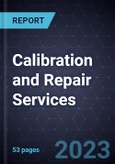Customers Looking for a Quick Turnaround Time and Compliance with ISO/IEC 17025 Standards Will Drive Demand
The global calibration and repair services market is anticipated to reach $3,996.9 million by 2024, driven by increased quality awareness, greater adoption by the aerospace and defense, and life sciences industries, and tightening regulations imposed by calibration regulatory authorities across the world. The instruments used in industries such as aerospace and defense, life sciences, and automotive, all of which are strictly regulated, are at high risk of failure, creating the need for calibration at regular intervals.
Focus on automation and asset software also drives the calibration and repair services market because these tools reduce the amount of time required to perform calibration and improve the quality of service rendered. For some electrical equipment, users need only to plug the equipment into the software, and the test is conducted automatically. Moreover, this market is expected to grow rapidly with the advent of the Industrial Internet of Things (IIoT) and connected assets, considering all connected equipment must be calibrated regularly to ensure the proper functioning of the device network.
Growth opportunities for the calibration and repair services market include multi-vendor and multi-instrument capabilities, connected mobility, and life sciences market activity, with further market consolidation and continuous acquisitions expected. However, the decline in activity across end markets such as consumer electronics, industrial, educational institutes, and energy due to the COVID-19 pandemic is expected to offset growth for the calibration and repair services market in the short-term. This trend is likely to reduce the frequency of on-site calibration and repair services due to social-distancing mandates.
This analysis of the global calibration and repair services market is segmented into North America, Europe, the Middle East, and Africa, Asia-Pacific, and Latin America. The type of calibration and repair services covered are electrical/electronics, mechanical, physical/dimensional, and temperature/thermodynamic. The end-user industries include aerospace and defense, consumer electronics and semiconductors, communications, medical/life sciences, automotive, industrial, and others (educational institutes). The study period is from 2016 to 2024.








